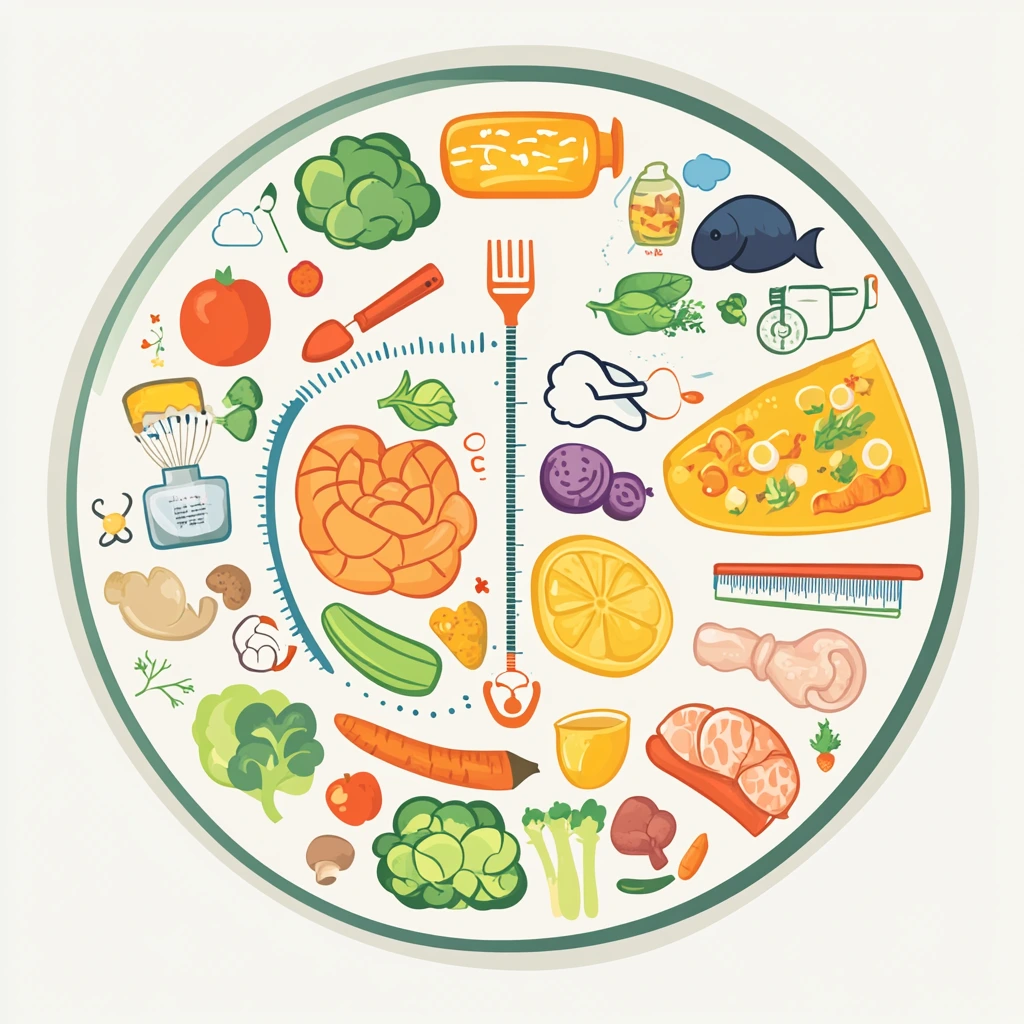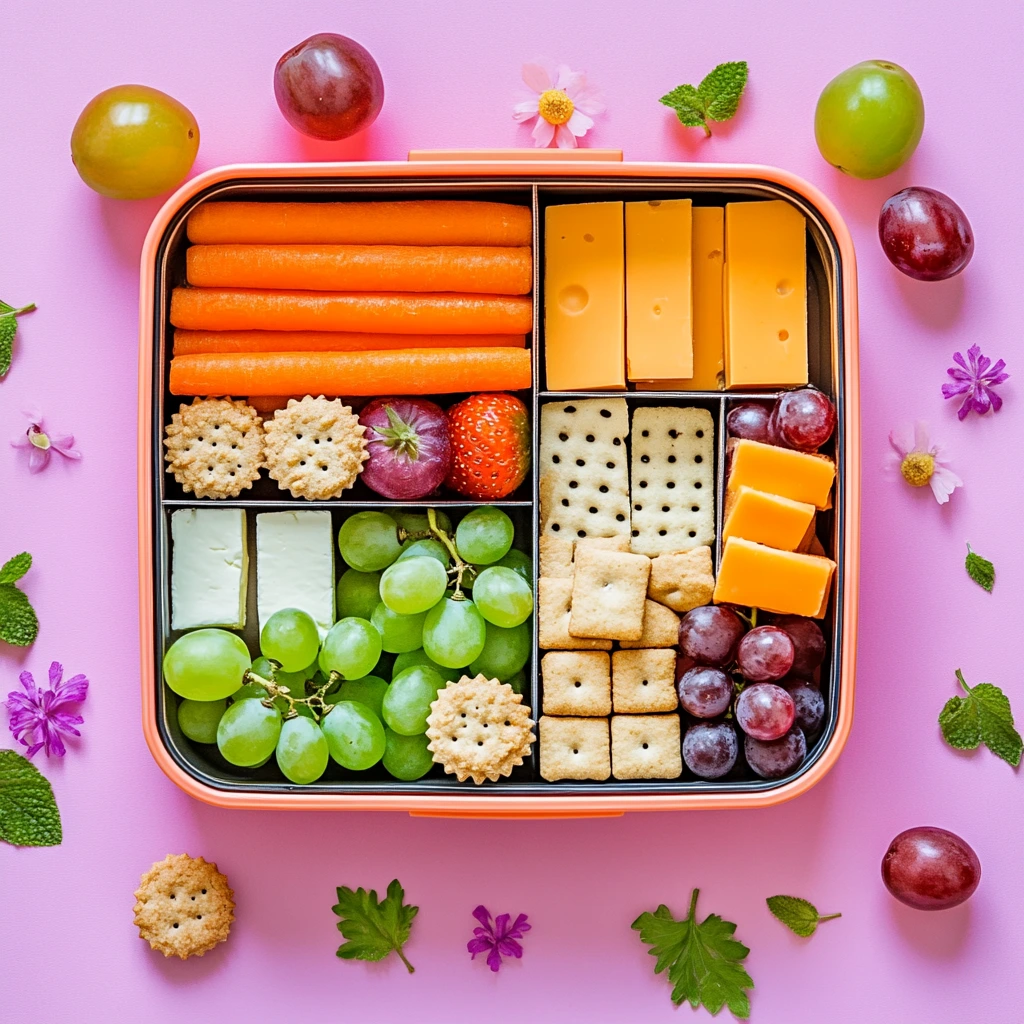Packing a healthy lunch for school is often a challenge, especially when dealing with picky eaters. Finding cold school lunch ideas for picky eaters that are both nutritious and enjoyable can feel overwhelming. Without the right options, lunches may come home untouched, leaving kids hungry and parents frustrated.
That’s why this article is here to help. In the following sections, we’ll dive into cold school lunch ideas for picky eaters that are simple to prepare, delicious to eat, and packed with all the nutrients your child needs. By the end, you’ll feel confident and inspired to tackle lunchtime with ease!
1. Understanding Picky Eating
1.1. What Defines a Picky Eater?
A picky eater is a child who often says no to certain foods or even whole food groups. They might only eat a few “safe” foods and avoid trying anything new. For example, they could prefer crunchy snacks over soft ones or refuse anything green on their plate.
Picky eaters might also reject foods based on how they look, smell, or feel. Some kids even stop eating foods they used to like or demand their meals be made in a certain way. While picky eating is common and often just a phase, for some kids, it lasts longer and becomes a bigger challenge. Understanding what makes your child a picky eater is the first step toward helping them eat a more balanced diet.
1.2. Common Reasons for Food Aversions
There are many reasons why kids avoid certain foods. Sensory issues are a big one. For instance, some kids don’t like mushy textures, strong smells, or bright colors in their food. These sensory reactions can make eating new or different foods feel overwhelming for them.
Past experiences can also play a role. If a child has been forced to eat something or felt sick after eating a certain food, they might refuse to try it again. Kids also pick up on the eating habits of those around them, so they may become picky if others are too.
By understanding why your child avoids certain foods, you can find creative ways to make meals more appealing and reduce stress at mealtime.
1.3. Impact on Nutrition and Growth
Picky eating can lead to problems with getting enough nutrients. For example, kids who avoid vegetables might not get enough vitamins like C or fiber to help their bodies stay healthy.
If picky eating continues for a long time, it might slow down their growth or affect their energy. They could also miss out on key nutrients that help their brain and body develop. However, with careful planning and some creativity, parents can still make sure their child gets what they need to grow strong and healthy.
2. Strategies for Preparing Appealing Cold School Lunches for Picky Eaters
2.1. Involving Children in Cold Lunch Preparation
One of the best ways to get picky eaters excited about school lunches is to involve them in the process. When kids help plan and prepare their meals, they feel a sense of control and ownership over what they’re eating. This can make them more likely to try new foods or enjoy what’s packed in their lunchbox.
Start by asking your child to choose from a list of healthy options, such as picking fruits, vegetables, or sandwich fillings. You can also let them help with simple tasks, like spreading peanut butter, arranging items in the lunchbox, or cutting food into fun shapes. When children are part of the process, they often feel proud of their creations and are more open to eating what they helped make. Plus, it’s a great opportunity to teach them about balanced nutrition in a fun, hands-on way.
“Getting kids involved in packing their lunches can make them more likely to eat and enjoy their food. For more ideas on creating exciting meal options, check out these creative gluten-free school lunch ideas for kids, which include fun and nutritious options that are easy to prepare together.”
2.2. Presentation and Variety in Cold Lunch for Picky Eaters
The way food looks can make a big difference in whether a picky eater decides to try it. Fun presentations can turn an ordinary lunch into something exciting and inviting. For instance, use cookie cutters to create sandwiches in fun shapes or arrange fruits and vegetables into colorful patterns.
You can also try themes to keep lunches interesting, like “rainbow day” with a mix of colorful foods or “build-your-own” lunches with separate components like crackers, cheese, and deli meats. Including a mix of textures and flavors in small portions can encourage your child to explore different foods without feeling overwhelmed. With some creativity, you can make even simple meals feel special and appealing.
2.3. Balancing Nutrition with Food Preferences in Cold Lunches
Finding the right balance between healthy options and your child’s preferences can be tricky, but it’s not impossible. Use the table below for ideas to incorporate preferred foods while introducing new options:
| Preferred Foods | New, Healthy Options to Include |
|---|---|
| Peanut butter sandwich | Add banana slices or a side of carrots |
| Chicken nuggets | Pair with cucumber sticks or apple slices |
| Cheese sticks | Include whole-grain crackers or cherry tomatoes |
| Pasta with butter | Mix in a few small broccoli florets or peas |
| Yogurt | Add a topping of fresh berries or granola |

By pairing familiar foods with something new, your child may feel more comfortable trying different flavors. Over time, this can expand their palate while still ensuring they enjoy their meals.
“Balancing what your child loves with healthy options is key. For more lunchbox-friendly recipes, explore these quick and simple gluten-free lunch ideas, which are perfect for busy mornings and picky eaters alike.”
3. Creative Cold School Lunch Ideas for Picky Eaters
3.1. Deconstructed Sandwiches
- Deconstructed sandwiches are a simple and fun lunch option that can appeal to picky eaters. Instead of assembling a full sandwich, you can pack the ingredients separately. This way, your child can enjoy each part on its own or put it together just how they like.
- For instance, you could include slices of bread or crackers, deli meat, cheese, and a small container of spread, such as mayo or mustard.
- In addition, separating the ingredients keeps everything fresh and avoids sogginess. To make it more exciting, you might swap regular bread for mini bagels, wraps, or pita bread.
- Furthermore, adding sides like baby carrots, cucumber slices, or fruit provides variety and balance. Not only does this method make lunchtime more interactive, but it also gives kids control over what they eat, increasing the chances they’ll enjoy their meal.
3.2. Bento Box Inspirations: “Cold school lunch ideas for picky eaters”
Bento boxes are another creative way to pack an appealing lunch. These divided containers allow you to include a variety of foods in small portions, making meals more fun and engaging. For example, you could pack rolled slices of turkey or ham, cubes of cheese, and crackers in separate sections. Along with these, consider adding colorful fruits like grapes or strawberries for a sweet touch.
Moreover, bento boxes make it easy to mix textures and flavors. You can also include veggies, such as cherry tomatoes or carrot sticks, paired with a small dipping sauce. To make it even better, adding a little treat—like a cookie or a few chocolate chips—can make lunch feel special. By offering familiar foods along with something new, you not only keep your child interested but also encourage them to try different flavors.

“Using bento boxes is a great way to pack a variety of foods in one container. If you’re looking for more inspiration, take a look at these top gluten-free lunch ideas for kids for more tips on combining healthy and delicious items.”
3.3. DIY Lunchables
DIY Lunchables are a fantastic way to make lunchtime fun and nutritious. Instead of buying pre-packaged kits, you can create your own version with healthier ingredients. For instance, you might pack slices of deli meat, cheese, and whole-grain crackers in a divided container, allowing your child to build their own mini sandwiches.
Additionally, you can customize DIY Lunchables to include different themes. For example, you could pack mini tortillas, shredded chicken, cheese, and salsa for a taco-themed lunch. Alternatively, you could include pita bread, marinara sauce, and mozzarella for a mini pizza kit. To round out the meal, don’t forget to add a side of fresh fruit or veggies. By doing this, you ensure the lunch is both fun and balanced. Above all, DIY Lunchables give your child a chance to enjoy a hands-on meal they’ll love.
3.4. Pasta and Grain Salads
Pasta and grain salads are great choices for a cold lunch, especially because they are easy to make and customizable. First, you can start with kid-friendly pasta shapes, like spirals or bowties, and toss them with olive oil, a sprinkle of Parmesan, and mild veggies like peas or cherry tomatoes.
Similarly, grain salads are another excellent option. For instance, you could use cooked quinoa or rice as a base and mix in small pieces of chicken, corn, or cucumbers. Additionally, packing a small container of dressing on the side lets your child decide how much to add, making the meal more appealing to them. Not only are these salads filling, but they also allow you to include a variety of healthy ingredients in a single dish. With so many options to choose from, pasta and grain salads are a versatile and delicious addition to any lunchbox.
4. Tips for Ensuring Cold School Lunches Are Eaten by Picky Eaters
4.1. Consistent Exposure to New Foods in Cold Lunches
Introducing new foods takes time and patience, but consistent exposure can make a big difference. Encourage your child to taste new foods without forcing them. For example, you can include a small portion of something new alongside their favorite foods. Make it fun by presenting the food in a creative way, like cutting it into shapes or offering a dip.
Over time, repeated exposure helps children feel more familiar and comfortable with new foods. Even if they don’t eat it right away, seeing it regularly builds trust and increases the likelihood they’ll try it eventually.
4.2. Positive Reinforcement: Trying Cold School Lunch Ideas for Picky Eaters
Praising your child when they make an effort to try new foods can go a long way. Even if they take a tiny bite or just explore the food with their hands, offer positive reinforcement. For example, say things like, “I’m so proud of you for trying that!”
Avoid punishing or pressuring them if they don’t eat something. Instead, keep mealtimes relaxed and encouraging. Celebrate small victories, and over time, your child will feel more confident and willing to try new things. Positive reinforcement turns eating into a fun and rewarding experience rather than a stressful one.
4.3. Monitoring and Adapting Cold Lunch Preferences
Paying attention to what your child likes and dislikes can help you plan lunches that they’ll enjoy and actually eat. If you notice they leave certain foods untouched, try replacing them with similar but slightly different options. For example, if they don’t like raw carrots, offer cucumber slices instead.
Similarly, if they seem to enjoy a particular food, include it more often but mix it up with new variations to keep things exciting. Adapting to your child’s preferences shows you’re listening to their needs while still encouraging variety and balance in their meals.
5. (FAQs) About Cold school lunch ideas for picky eaters
How can I keep cold lunches safe and fresh?
Use an insulated lunchbox to keep food cold. Add one or two ice packs to help maintain the temperature. Place perishable foods, like yogurt or deli meat, near the ice packs. Choose foods that don’t spoil quickly, such as fruits and veggies. Remind your child to keep the lunchbox closed until it’s time to eat. If the school has a fridge, ask your child to store their lunch there. These steps will help keep the lunch fresh and safe to eat.
What if my child refuses to eat the lunch?
If your child refuses their lunch, stay calm. Ask them why they didn’t eat it. This can help you understand their preferences. Involve your child in packing lunches to make them feel included. Pair favorite foods with something new. Offer small portions to avoid overwhelming them. Don’t force them to eat but encourage them gently. Celebrate even small attempts to try new foods. Over time, they may become more open to eating their lunch.
How can I introduce new foods to a picky eater?
Start small. Add a tiny portion of a new food next to their favorite. Don’t push them to eat it—just encourage them to try. Use fun shapes or dips to make it appealing. Keep offering the food even if they refuse it the first time. Praise them when they try something new, even if it’s just one bite. Slowly increase the portion as they get used to it. With patience, they will likely accept more foods over time.
6. Conclusion
Creating cold school lunch ideas for picky eaters doesn’t have to be stressful. By involving your child in the process, using creative presentations, and balancing their favorite foods with nutritious options, you can make lunchtime enjoyable and healthy. Consistent efforts to introduce variety, along with positive reinforcement, will help even the pickiest eaters feel more comfortable trying new foods. With these strategies, packing cold school lunches becomes a chance to foster healthy eating habits and ensure your child looks forward to every meal.

